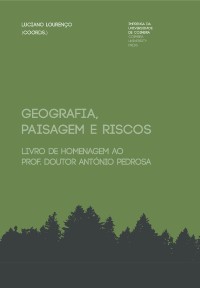Please use this identifier to cite or link to this item:
https://hdl.handle.net/10316.2/39936| Title: | Questões de risco e vulnerabilidade do património construído: o caso da Baixa pombalina | Other Titles: | Issues of risk, resilience and vulnerability of the built heritage: the case of Lisbon downtown | Authors: | Martins, Nuno Pereira, Andreia Amorim Forbes, Catherine Matos, Daniela |
Keywords: | Built heritage;natural hazards;disaster risk reduction;GIS for risk assessment;Lisbon downtown;1755 Lisbon earthquake;Património construído;riscos naturais;desastres;vulnerabilidade;sistema de informação geográfica;Baixa Pombalina | Issue Date: | 2016 | Publisher: | Imprensa da Universidade de Coimbra | Journal: | http://hdl.handle.net/10316.2/39922 | Abstract: | This chapter focuses on a rather understudied subject in urban risk
management research: understanding the relationship between risk,
urbanism and heritage. The goal is to identify the exposure of built
cultural heritage to natural hazard using as a case study the city of
Lisbon, in particular, the ‘Baixa Pombalina’ (Lisbon Downtown),
which resulted from the reconstruction after the Big Earthquake of
1755. Geographical Information Systems (GIS) have allowed for
correlating the built heritage with susceptibility maps that integrate
the Municipal Master Plan of Lisbon. The study seeks to understand
the relationship between risk and cultural heritage as a strategy of
awareness to the vulnerabilities of populations and cultural heritage.
We argue that built heritage has different dimensions and that all of
them are essential to the construction of the identity of the place.
The chapter also discusses the role that hazard assessment can play in
the preparedness of the city of Lisbon and, by analogy, other similar
cities, for the next disaster and its mitigation. Este capítulo aborda uma problemática específica no quadro da investigação sobre a gestão de riscos em meio urbano: a compreensão da relação entre o risco, urbanismo e património, tomando Lisboa, e em particular a Baixa Pombalina, a que resultou da reconstrução da cidade após o terramoto de 1755, como caso de estudo. O objetivo central foi identificar a exposição do património cultural construído aos riscos naturais e discutir os fatores e dinâmicas que influenciam a sua vulnerabilidade. Um Sistema de Informação Geográfica permitiu correlacionar os sítios e edifícios patrimoniais com a cartografia de susceptibilidade a diferentes riscos que integra o Plano Diretor Municipal de Lisboa. Argumentamos que o património construído tem diferentes dimensões e que todas elas contribuem para a construção da identidade e conservação de pessoas e bens culturais. Os resultados sublinham o papel da avaliação da exposição aos riscos na preparação de Lisboa e, por extrapolação, de outras cidades, para o próximo desastre e sua mitigação. |
URI: | https://hdl.handle.net/10316.2/39936 | ISBN: | 978-989-26-1232-4 978-989-26-1233-1 (PDF) |
DOI: | 10.14195/978-989-26-1233-1_14 | Rights: | open access |
| Appears in Collections: | Geografia, paisagem e riscos: livro de homenagem ao Prof. Doutor António Pedrosa |
Files in This Item:
| File | Description | Size | Format | |
|---|---|---|---|---|
| questoes_de_risco_e_vulnerabilidade.pdf | 6.58 MB | Adobe PDF |  |
Items in DSpace are protected by copyright, with all rights reserved, unless otherwise indicated.
